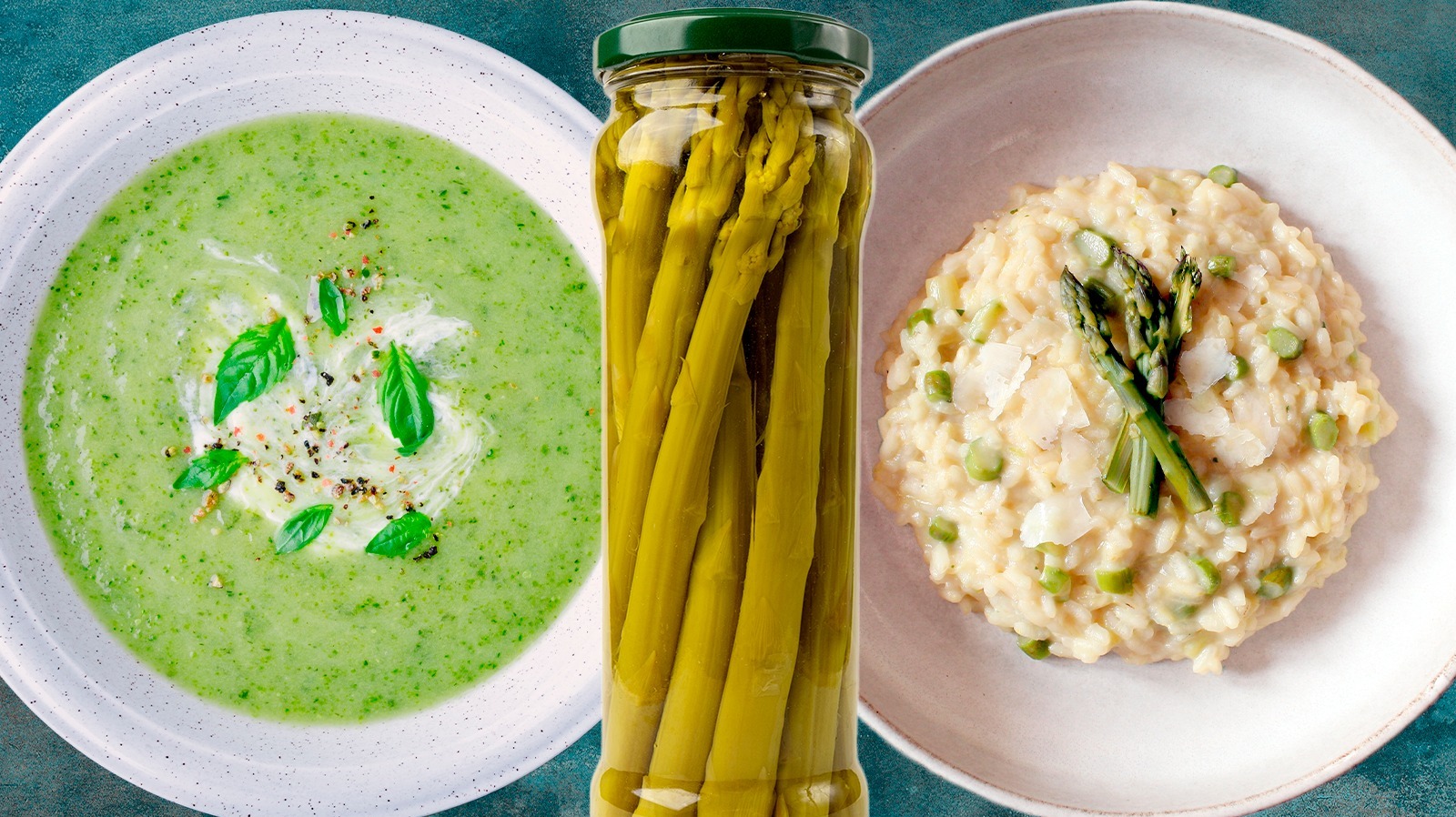When it’s in season, bunches of bright green (and white, and maybe even purply green) asparagus spears line the shelves at supermarkets and produce stands across the nation for several weeks. But this surplus doesn’t last for long. Once the season is over, by around the end of June, asparagus is going to become harder and harder to find.
Enter canned asparagus. The canning process preserves the asparagus shortly after harvesting, ensuring that its nutritional value and flavor remain largely intact. This means that if you get a hankering for asparagus in December, grabbing a can of this tasty vegetable off the shelves is a sure bet. And while it might not provide the exact same level of enjoyment as fresh asparagus, there are some other perks that come with the canned variety, including the fact that you can skip the washing, trimming, and blanching parts of the asparagus preparation process.
Moreover, the shelf life of canned asparagus is much longer than for fresh asparagus, so it can sit on your pantry shelf for months, just waiting for the perfect opportunity to arise. So, let’s take a look at some of the ways that you can make the most of those opportunities.
1. Toss canned asparagus in a salad with feta cheese
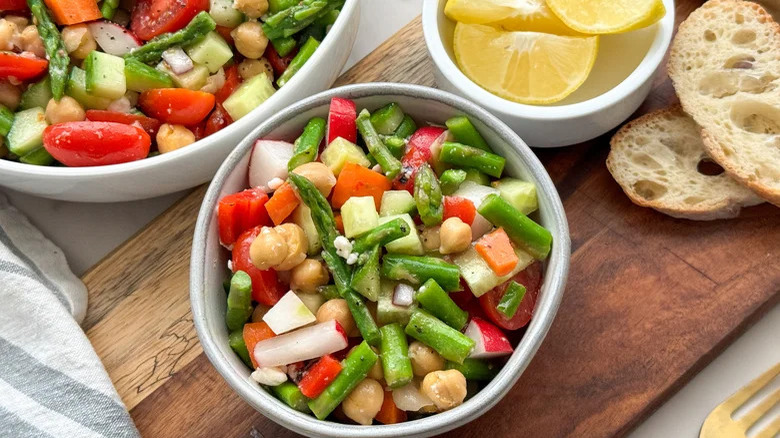
Miriam Hahn/Look
One of the perks of having salad for lunch is that in most cases, it simply involves tossing a bunch of ingredients together, as they are, and pouring in a dressing of some kind. When it comes to adding asparagus to a salad, that is usually not the case — if you’re working with fresh spears, you’ll have to cook them before you mix them into your salad, or you’ll end up with more crunch than you bargained for.
Not so with canned asparagus. In fact, if you use canned spears to make a tasty chopped asparagus salad recipe, you won’t even have to do the chopping yourself. In canned form, the ingredient already comes ready-made. At the same time, you still get the benefits of the flavors that this recipe is going for. The combination of the grassy asparagus with the tangy and savory feta, along with the flavors and texture of the phalanx of other vegetables in this salad, can bring out the best of each ingredient involved.
2. Blend it into a soup
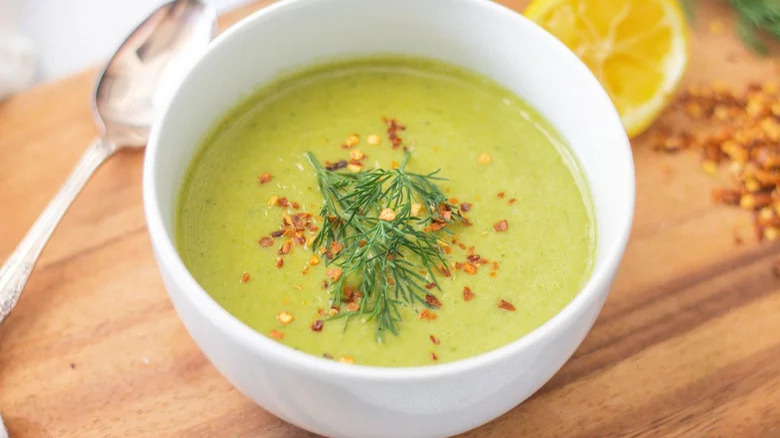
Jaime Bachtell-Shelbert/Look
As convenient as canned asparagus can be, some people are not too keen on the idea of vegetables that have been soaking in salty water for who knows how long. But that’s not a good reason to swear off this handy pantry item. You can easily get over this hang-up by blending the spears into an easy cream of asparagus soup, dispatching with any lingering texture issues that may arise from using canned vegetables.
This will also help add flavor to the spears. The cream pairs nicely with the earthy taste of the asparagus, while a few squeezes of lemon help brighten the taste and make this a perfect accompaniment for spring or summer meals. And making this couldn’t be simpler — just make sure you only add the asparagus to the broth shortly before you remove it from the heat, and long after you put the potatoes in. Overcooking asparagus will make it lose flavor and color, which are the strengths of this recipe.
3. Add canned asparagus to risotto

Michelle McGlinn/Look
Italian risotto is one of those dishes that you can make with practically any ingredient. As long as you’re cooking the rice properly — slowly and over a long period of time for maximum creaminess — you can get as creative as you want with the ingredients you put in. That said, some flavors work better than others, and the taste of asparagus takes the cake in that department.
For instance, when making an asparagus and morel risotto recipe, you’ll pump up the flavor with the use of fresh morel mushrooms and dried porcini mushrooms — but when it comes to the asparagus, all you have to do is add it at the very end, right before the final touches of butter and Parmesan, making sure not to cook the rice for too long after that. In another iteration of asparagus risotto, you can pair asparagus with broad beans for risotto that tastes garden-fresh (even though you may be using canned ingredients for the whole thing). The secret to this recipe is to use the asparagus in two ways: blending middle segments of the spears with basil for a bright and fresh puree to stir into the risotto, along with some asparagus pieces added whole to top the rice at the end of the cooking process.
4. Char the spears in oil
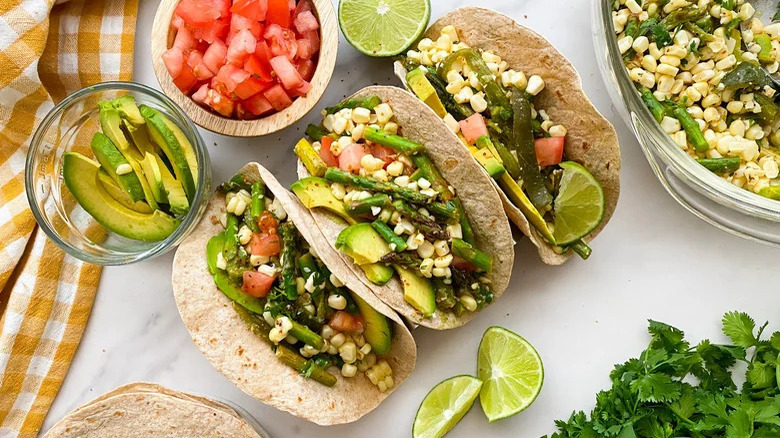
Miriam Hahn/Look
Although canned asparagus has already been blanched, and therefore doesn’t require additional heating, you can still cook it briefly after taking it out of the can if you want to achieve a specific effect. For example, charring canned asparagus can give the spears a nice, smoky flavor that blends in well with the veggie’s natural grassiness. Once that’s settled, though, what to do with your tasty charred asparagus?
Try using it in a charred asparagus tacos recipe, with a zesty flavor profile completed with the addition of fresh lime juice, Tajín seasoning, and Cotija cheese. Just be sure to char the canned asparagus for less time than the recipe calls for with fresh asparagus, because that takes a while to cook in a cast-iron pan. Instead, just turn up the heat and pay close attention to make sure the charring doesn’t turn into burning. For added convenience, you can even prepare this filling ahead of time, and then heat it up before you’re ready to add it into your taco shells.
5. Squeeze on some lemon

Miriam Hahn/Look
The idea of canned asparagus may not appeal to everyone, but what if we told you there is a simple technique to handle the asparagus so that you would never even know those spears weren’t fresh? That technique is to squeeze some lemon onto the vegetable, which instantly revives its flavor and brings a sense of brightness that inherently comes with the addition of lemon. And there are several ways to do this.
For one, you can make fried lemon and asparagus fritters. To ensure the lemon flavor comes through even after cooking the fritters, use lemon zest as well as its freshly squeezed juice. The fresh chives and parsley that go into the dish will also serve to brighten its flavor.
Another great way to use lemon with your asparagus is in a creamy lemony asparagus galette. Most of the lemon flavor here is mixed into the ricotta, which gets spread over the flaky pastry. But you can further brighten the flavor of the asparagus by squeezing a bit more lemon juice over the spears after you’ve arranged them on top of the ricotta. You may even want to do this after taking the galette out of the oven, to help the lemon taste remain as intact as possible.
6. Pair canned asparagus with cheese

Kara Barrett/Look
Cheese makes many dishes better, and the same is true for canned asparagus. While there are numerous ways to use cheese to improve a dish, there are some methods that stand above the rest. A cheesy asparagus galette recipe is one of them. The combination of lemon and goat cheese, together with Gruyère and Swiss cheese, creates a flavor profile that is at once rich and fresh, which in turn offsets the heavier dough of the galette.
For a more simple recipe, try making an asparagus and goat cheese tart, which only requires four ingredients if you use store-bought puff pastry. All you have to do is spread the goat cheese on the pastry, arrange the asparagus and thyme on top, and bake.
Or for something completely different, there are diced asparagus and Parmesan crisps. You may have noticed that grating some fresh Parmesan on asparagus before baking it yields a delightful little side dish, but this offers an even more interesting way to combine the two ingredients. So, next time you want to wow your guests with an appetizer, try grating some Parmesan cheese and mixing it with shredded asparagus, so that the two ingredients have roughly the same texture and can more easily blend together. Then fashion the mixture into thin rounds and bake them to a perfect crispiness.
7. Combine it with fatty ingredients
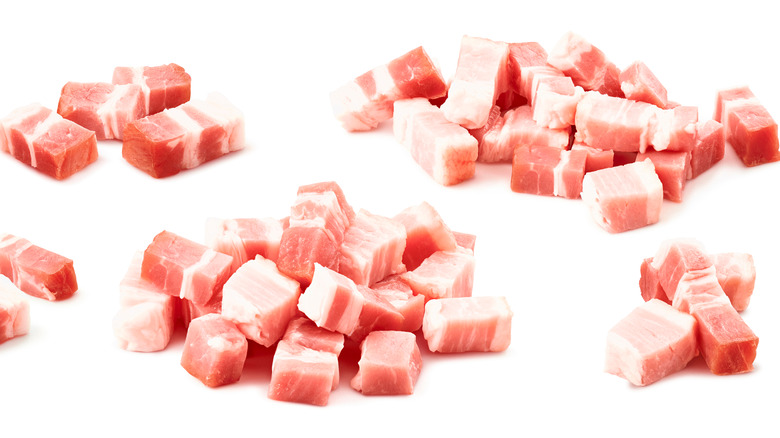
Fat has a way of adding an incredible depth of flavor to most things, including vegetables like asparagus. That’s why adding the right kind of fat to your canned asparagus can help it achieve new heights in terms of taste. And while a simple drizzle of oil can certainly do the trick if you’re strapped for time or want something super simple, there’s a whole host of other inventive methods that can take your asparagus from fine to great with fat.
One such method is on display in a springy asparagus carbonara recipe. A typical carbonara pasta is made with lardons (or pancetta), eggs, grated cheese, and sometimes heavy cream. This recipe uses most of that plus the asparagus, turning this pasta dish into a complete one-pot meal. Meanwhile, the asparagus will be infused with the savory and slight smokiness of the bacon, while at the same time cutting through that richness with its light and springy grassiness.
8. Mash up canned asparagus with coconut cream
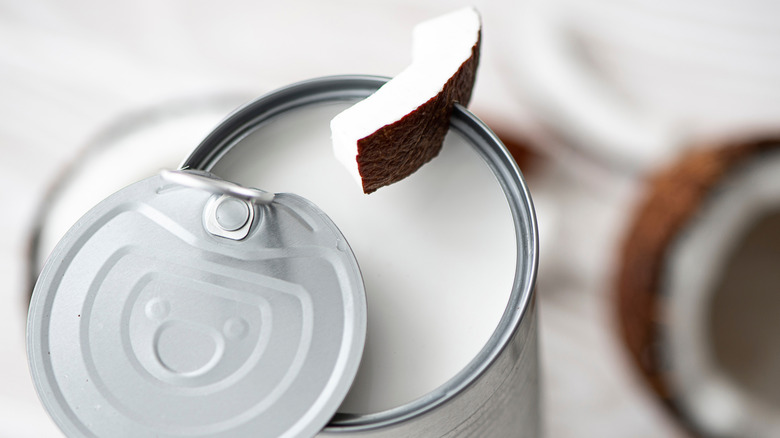
Mashed potatoes are a great side for a wide range of meals, and an undeniable American staple. But let’s face it — they can get a bit old after a while. Who wants to have mashed potatoes every single day? As good as they are, it’s nice to have some variety sometimes. That’s where a creamy asparagus mash may come in handy, especially if you’re trying to keep things gluten-free and vegan, a combination of requirements that is not always easy to achieve.
But easy is the order of the day with this mash, especially when using canned asparagus, as you won’t have to blanch the spears first, as you would if they were fresh. Other then that, all you have to do is sauté some onions in coconut oil before blending them with canned asparagus, coconut cream, parsley, lemon juice, and seasoning to taste. If you don’t need this recipe to be vegan, feel free to use regular cream, but beware that this may give the asparagus a heavier feel.
9. Drizzle on a balsamic glaze
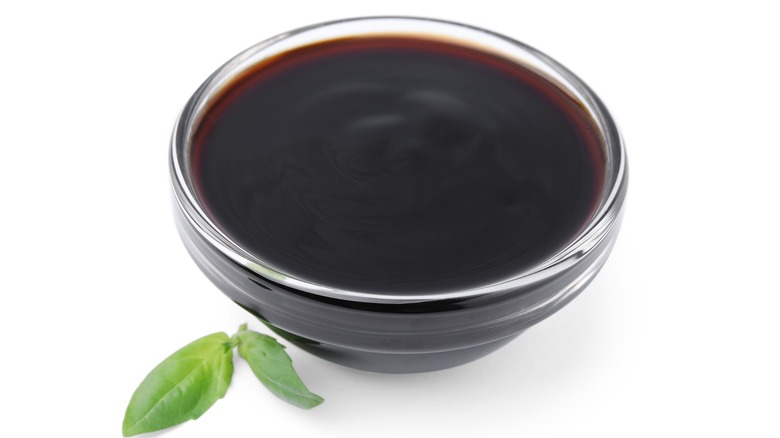
Balsamic glazes come in many different forms, and as long as they’re made with good ingredients, you most likely can’t go wrong by adding one of them to your asparagus. It’s as simple as heating up the canned asparagus in the oven or pan and adding your glaze, which will provide a lovely sweet contrast to the vegetable’s earthy taste.
But if you’re looking for more specific guidance, we can suggest a honey balsamic glaze recipe, made with just balsamic vinegar and honey. The key is to heat the ingredients together in a pan until they’ve reduced into a thick, gooey substance. Once it has cooled, you can drizzle it over your asparagus or anything else you may fancy, including salads, bruschetta, or various cuts of meat. You can also use brown sugar instead of honey in this recipe to create a more caramelized flavor.
10. Top with a creamy mustard sauce
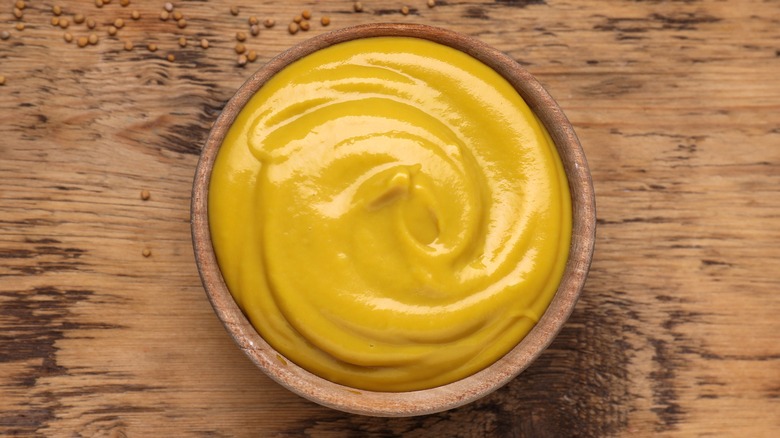
When you’re looking for a light and airy side dish for your dinner party, a spring vegetable like asparagus will certainly come in handy, even in the dead of winter. The trick is to pair your spears with a light and airy sauce that will do them justice, keeping the asparagus bright and flavorful without bogging it down.
One popular way to achieve this is by giving asparagus a new lease on life with a mustard sauce, which can even be made without being heated. All you have to do is mix together some mayonnaise, Dijon mustard, olive oil, white wine vinegar, and salt and pepper to taste, before pouring this concoction over your asparagus. While this combination would certainly work well with steamed asparagus that has been refrigerated, you can easily drizzle the mustard sauce over canned asparagus after rinsing and drying it.
11. Wrap canned asparagus in prosciutto
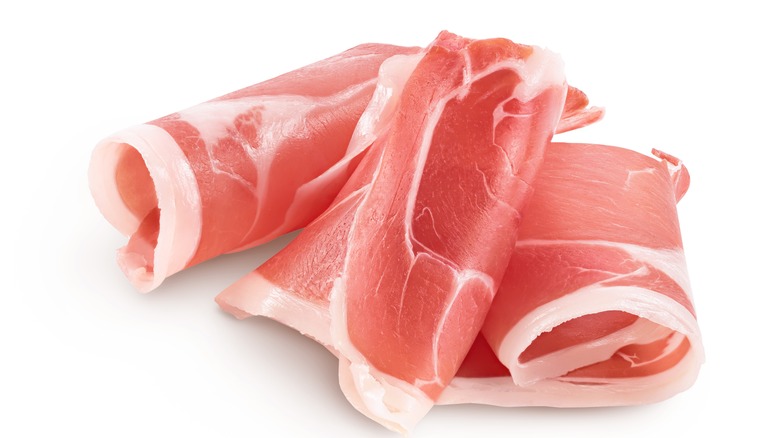
Prosciutto is a handy deli meat to have on hand in the springtime. You can wrap it around all sorts of produce to add a savory element to fruit or vegetables. Prosciutto and asparagus rolls showcase the power of thin-sliced ham when combined with a tasty spring vegetable. As a perk, the recipe is also quick and easy, making it an excellent choice for pre-dinner finger food.
To make this, just toss canned asparagus in a combination of olive oil, lemon zest, lemon juice, and seasoning, and wrap the spears tightly in prosciutto to make sure everything stays together when you pick the bundle up to put it in your mouth. For best results, be sure to pick out a very good quality prosciutto — don’t just use the first ham you come across. Prosciutto has a more delicate flavor than other such deli meats, and it won’t overwhelm the equally delicate taste of the asparagus.
12. Thoroughly dry it after removing from the can
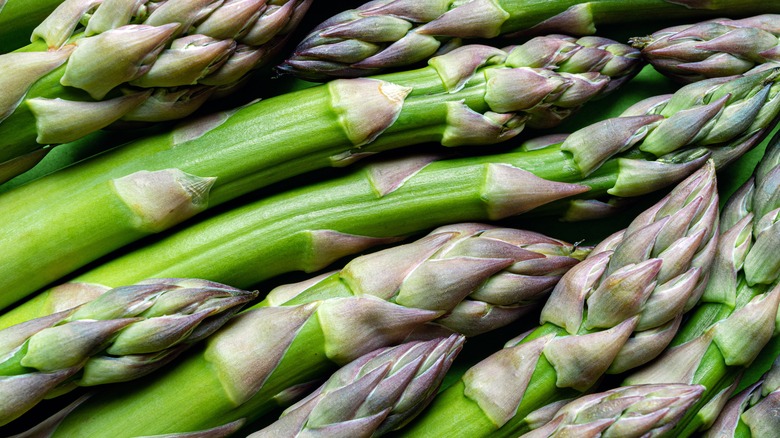
There are myriad different ingredients that can be paired with canned asparagus to give it more flavor. Cheese, lemon, and bacon are just a few. But there are also some techniques that can be used to improve the experience of eating canned asparagus, ones that don’t require any added elements at all.
In fact, you should know that the best technique for how to cook canned asparagus so that it will not be soggy is to properly drain and rinse the spears after removing them from the can, before patting them dry. This helps prevent the common problem of canned asparagus losing its texture due to the salty water that it soaks in. That moisture is what’s responsible for limp asparagus in dishes like casseroles. So, if you can remove that moisture, your canned asparagus should be good to go for a variety of recipes.
13. Dry-char canned asparagus on the stove

Whether you’re cooking with fresh asparagus or the canned variety, you’ll be missing out if you don’t at least attempt to dry-char this veggie once in a while. This technique can add a nice caramelization flavor, as the charring enhances the natural sugars that asparagus contains, and adds smokiness to it in the process. You also won’t have to use any cooking oil for this technique, which may help if you’re trying to avoid certain types of fats.
Although dry-charring asparagus can be done over a barbecue or another type of open flame, if you’ve never tried this before, you may want to start with a pan and cook it on the stove. To do this, just heat a very dry pan until it’s scorching hot, then drop the asparagus — patted thoroughly dry — directly in there, making sure the spears don’t overlap. Dryness is key here, as the name of this technique suggests; any moisture in the pan will cause steam to rise, stopping the charring process in its tracks. Once you’re done with this, not only will you have fragrant and tasty asparagus with an interestingly snappy texture, but also good-looking veggies with a charred pattern.
14. Turn the spears into fries

Miriam Hahn/Look
Frying vegetables to make them more palatable is not a new concept, but it is one that works particularly well with asparagus — especially if you consider the fact that the spears already resemble the shape of fries. But since asparagus is not as robust as potatoes, it could easily fall apart in a traditional deep fryer. That’s why it’s important to use an air fryer asparagus fries recipe.
Prepare this by dipping the spears in aquafaba — the liquid from a can of chickpeas — and breadcrumbs before placing them in the air fryer basket. Cook the asparagus until it’s done on each side. The benefits here are multifold: You get to add flavor and texture to your canned asparagus without using too much oil in the process, as air fryers do not require a lot of it to operate. Pair the fries with your dressing or dip of choice, such as ranch or blue cheese.
Static Media owns and operates Look, Mashed, and Food Republic.



